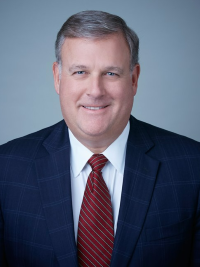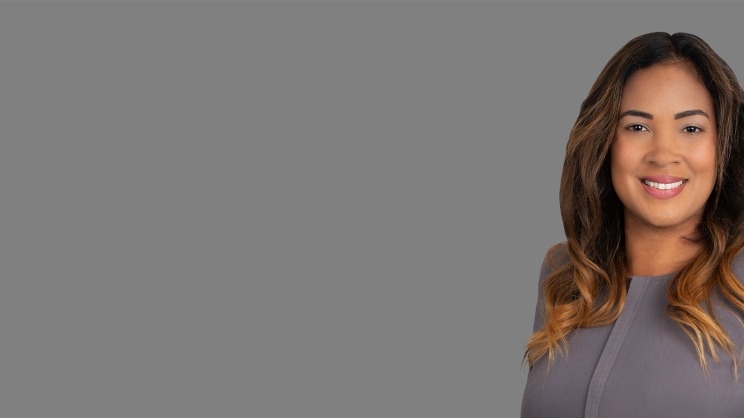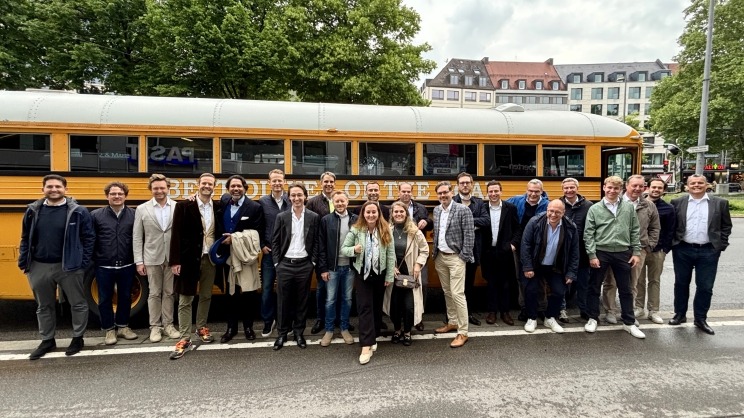Alumni Spotlight: Jeffrey Fitts

Jeffrey Fitts, a former Managing Director with Alvarez & Marsal’s (A&M) Real Estate practice from 2008 to 2014, is currently a Managing Director at HPS Investment Partners, LLC, a leading global investment firm.
During his tenure at A&M, Mr. Fitts was responsible for the workout, management and ultimate liquidation of Lehman Brothers’ real estate portfolio following Lehman’s Chapter 11 filing. Mr. Fitts credits Bryan Marsal with being a wonderful mentor and friend to him. Mr. Fitts also spoke to the strengths and teachings John Suckow provided to him. In the following Q&A, Mr. Fitts discusses his early days at A&M, key takeaways from Lehman Brothers and personal mottos for success.
You went to work in the real estate industry after you graduated from the University of Delaware with a bachelor’s degree. Why did you initially pursue that career path?
I worked at Citibank while I was in college. My father had also worked at Citibank. It wasn’t really a question of what company I was going to work for after college. It was more the question of in what part of Citibank I would work. I met people from a bunch of different units at Citibank and I found the people in the real estate division to be more relaxed and wittier.
Before joining A&M you worked at GE Capital from 2000 to 2008 where you led workout, portfolio and distressed debt investing groups. What ultimately brought you to A&M?
I’ve known Bryan Marsal since I was five years old. Bryan worked for my father when my father ran the workout unit at Citibank in the early 1970s and into the 1980s. Bryan worked with my father for many years.
Coming to work at A&M was always something that I had thought and dreamed about. On Father’s Day in 2008, I went over to Bryan’s house with my father to visit Bryan, and Bryan repeated something that he had asked me before: “Why don’t you come over to work for us?” And this time I said yes. I had been at GE Capital for a while, and I was looking to move on. I knew Bryan wouldn’t ask me forever, and I knew that the time I would have to work with Bryan wouldn’t be in perpetuity. It felt like I was in the right place at the right time for a change. I spent the next couple of months on interviews, and I accepted the role at A&M in late August 2008. My start date at A&M was September 15, 2008, the day Lehman Brothers filed for bankruptcy.
What was your first week at A&M like?
Well, I certainly got a taste of A&M’s propensity for action. My first day I got to work early, and nobody was there. I’m walking down the hallway and I see Bryan. He tells me that last night he was appointed as Chief Restructuring Officer of Lehman Brothers. He looks down at his watch and he asks me to meet him in a conference room in 30 minutes. I give him the only answer I can give, which is: sure.
Thirty minutes into my first day of work I am sitting in a conference room with Bryan Marsal and, I believe, John Suckow and Martin Winter. We sit down and we start asking questions like “What are we going to tell the press?” The thought runs through my mind, “No, this is my first day! You can’t ask me what we’re going to tell the press! If you say something, Jeffrey, make sure it’s something smart. Other than that, just agree with Bryan and go from there.”
Bryan excuses himself from the meeting to go to Lehman Brothers by himself. I get an email at 11 p.m. that he’s just then leaving Lehman Brothers. The next day, I scour the press and there is no mention of A&M. The following day I am on the train on my way to work and my phone rings. It’s Bryan and he asks me what I’m wearing. I tell him slacks and a dress shirt. He says to get a coat and a tie, at minimum a coat, and to go to the 10:30 a.m. Lehman Brothers turn over meeting. I’m informed that I am running the Real Estate division. On my third day of work at A&M I went to Lehman Brothers’ headquarters and didn’t leave for over five years. That was the starting point of my A&M experience. I eventually gave up my office at A&M since I never went into the A&M office.
I was 100 percent not prepared. I was filled with pure terror, because the volume was much more than anyone could possibly take in and process. This combined with the fact that, at the time, the eyes of the financial world were watching A&M. There was an indescribable pressure that if I made a mistake, I wasn’t just hurting myself and my career, I was hurting the A&M brand and Bryan. It made it tremendously stressful.
While at A&M you were responsible for the workout, management and ultimate liquidation of Lehman Brothers’ $43 billion real estate portfolio in the aftermath of Lehman’s Chapter 11 bankruptcy filing. Can you tell us more about your work while at Lehman Brothers?
For the first couple of weeks, it was a $43 billion real estate portfolio. But as the international units went into their own bankruptcies, we lost control over the $20 billion in real estate investments that were offshore in Europe and Asia. As those entities collapsed, there were administrators brought in to run them locally.
There was $23 billion for us to manage, but we didn’t control it. In the days and weeks leading up to the bankruptcy Lehman Brothers had pledged every asset that was not nailed down. Lehman had pledged the vast majority of the $23 billion to third parties. The world didn’t know that the loan had been pledged to Chase and others. I can’t sell the loan without Chase’s approval. Therefore, we had months, if not years, where we were operating under two masters — the outside world and the equity investment (the people we had pledged the assets to on various deals). It made the job twice as difficult.
The actual amount of clean assets we could transact upon out of the $23 billion was about $3 billion. Lehman Brothers was famous in real estate projects for giving a particular borrower the senior debt and 90 to 95 percent equity. If you were a Lehman Brothers borrower, you merely had 5 to 10 percent equity in the deal. You had no money at risk. Of the $3 billion, there was a mix of real estate deals from all over the country. The next five years felt like we were keeping the wolves at bay so we could put Humpty Dumpty back together again and then sell.
What were your top three takeaways after working with Lehman Brothers?
1. Just More Zeroes
Daniel Ehrmann, former restructuring Managing Director at A&M, used to say, “The issues here are all the same. This is just more zeroes.” When you really drill down to it, it’s the same business issues we are dealing with every day. It doesn’t mean that the underlying issue was more complex, just bigger. This has always helped me understand that when looking at a complex problem, you have to break it down to its component parts and wrap your head around those pieces.
2. Don’t React to the Panic
We made the decision early on that the world was falling apart and that the last thing we would do would be to sell into that downturn. In times of panic, don’t react to the panic. Instead, stop and organize yourself and figure out your strategy. We didn’t think that selling, at the time, would maximize the estate, so we didn’t. Many people thought that decision was ill founded, but it wasn’t.
3. Hire the Right People
After Lehman Brothers was bought, the employees went to Barclays. They had the view that they were going to get fired after the 90-day obligation period. My early job was recruiting the right people into the bankrupt estate. They were ridiculously smart, and they knew the assets. We also had to figure out how to motivate individuals to work for the bankrupted estate who knew their time at the company was finite.
Do you have any personal mottos that you work and live by?
1. It’s all about your personal credibility. This is almost tattooed on my arm. If you’re not credible, all hope is lost. The most important thing to do is to have people find you credible, believable and honest. If people find you credible, then there are a lot of other positive traits they will attribute to you.
2. First in, last to leave. You want to be perceived as the hardest working person. One way, but not the only way, to do that is to be the first person in the office and the last one to leave.
3. Find your niche and exploit it. You can’t be all things to all people. Find something that you are good at and become the best at it, rather than just being this grand generalist.
Looking back at your time at A&M, what did you enjoy the most?
A&M and Lehman Brothers was the greatest professional experience of my life and nothing else comes close. It was such a unique point of time to have a front row seat to something like that. Looking back on it now, it was an unbelievably positive view of a Herculean task that we oversaw.
Who do you consider to be your closest mentors during your time at A&M?
Both Bryan Marsal and John Suckow were close mentors to me.
I lost my father in 2014 and I always saw Bryan as a father figure. I have so much respect both professionally and personally for him. I love spending time with him because he has tremendous lessons to share with people and the world.
I was always able to go to John and bounce something off him. John is unflappable when the world is going crazy.
What’s a piece of advice you would have given to your younger self?
The job of a restructuring person is often to deliver hard messages. I would have told my younger self that you can get to the blunt, hard messages but in a way that doesn’t inflame people.
You’ve been a Managing Director at HPS Investment Partners, LLC, since 2014. If you had to summarize with only a few words what life is like inside of HPS Investment Partners, what would you say?
The people at HPS have a raw intelligence that I greatly appreciate. I am privileged to be a part of this because these people are on another level intellectually — it’s staggering. They work hard and at their core they are very smart and good people.
How has the COVID-19 pandemic affected global investment firms?
It has made people adapt quickly and that’s true for HPS. We have a large portfolio of debt investments so we have insight into the companies we have lent money to. We have watched how they have responded to COVID. Their ability to adapt quickly has been stunning. People just accepted the reality with, “Okay, this is the new world so let’s go.”
Using five adjectives or short phrases, how would you describe yourself?
Frank. Honest. Logical. Strange. And I never stop.
You’ve had an amazing career trajectory. To what do you attribute your success?
Luck and hard work. I wish I had something more insightful but that’s the answer. I was in the right place at the right time. Lehman Brothers is the quintessential example of that. A week before I saw Bryan on Father’s Day in 2008, I had just turned down a job at a private equity firm. Had I taken that job I would have had a very different journey.
How do you differentiate yourself from other leaders?
I think what I tend to do well is put myself in other people’s shoes. And everyone tries to do that, but that is a skill that I have that allows me to be successful. The ability to put myself in their shoes (client, boss, employee, counter party) allows me to make better decisions. That is an important value add that I have.
Who inspires you?
My family. My wife and kids. I do all this for my wife and kids.
How do you spend your time outside of work?
I play golf. I have a 16 handicap. Bryan always beats me. I have started the tradition to play at Winged Foot every year with Bryan and two HPS people.
My wife and I recently bought a place in Manhattan and we are enjoying experiencing it again.
What’s next for you?
Retirement. I’m 56 years old now. I think I have another six to eight more years and then I’ll retire. I don’t know what I’ll do next. I will not be good at just reading a book.




